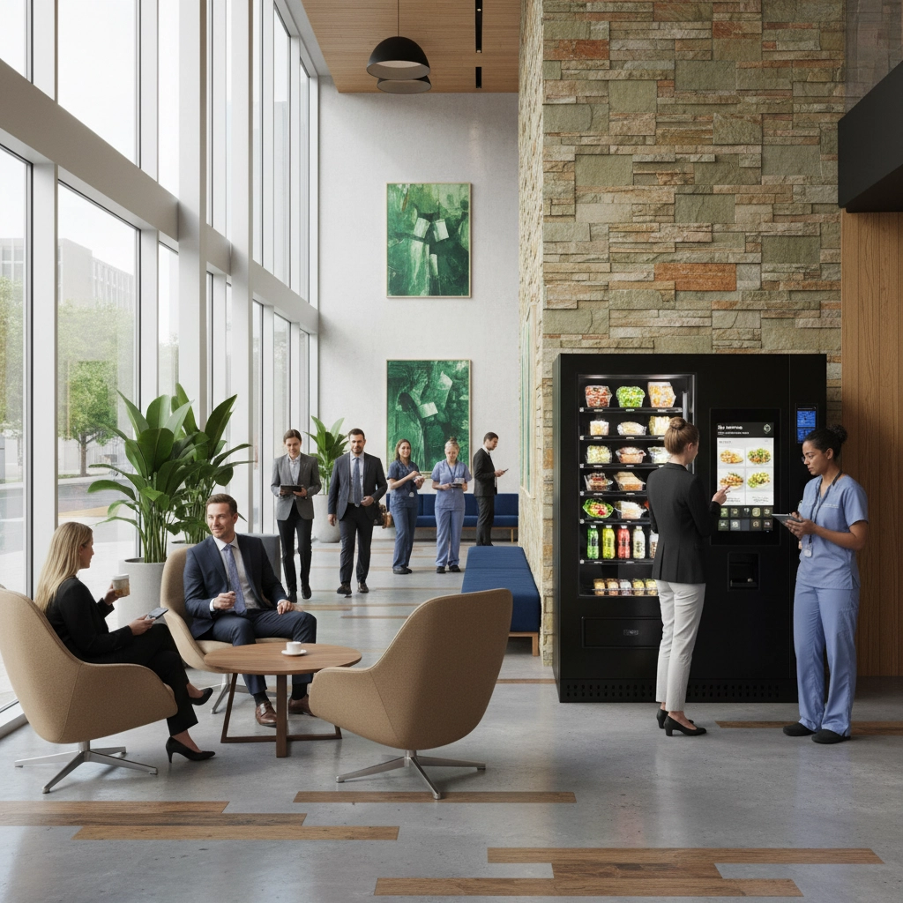How to Find Vending Locations: Hustle, Network, and Outsource (A Field Guide)
Picture this: You're driving around town with a trunk full of hope and a glove compartment stuffed with business cards, searching for that perfect spot to plant your vending machine money tree. Sound familiar?
Welcome to the wild world of location hunting, where fortunes are made and broken by foot traffic, and where that unassuming door might just lead to your next goldmine.
Here's the thing about finding vending locations, it's equal parts treasure hunt, networking marathon, and strategic chess match. And like any good adventure, you need multiple tools in your arsenal. Let's break down the three-pronged approach that actually works in the real world.
The "Open Doors" Strategy: Your Feet Are Your Best Friends
Walk Around Like You Own the Place
Here's some street wisdom for you: You never know what you may find behind that door. I once stuck my head into what looked like a tiny fitness studio, you know, the kind with maybe room for three treadmills and a protein shake blender. Turns out, it was actually a rehabilitation center that stretched back for what felt like miles, with dozens of staff members and patients who would've loved convenient snacks and drinks.
That one "quick peek" reminded me that you can’t judge a snack by its wrapper.
The beauty of the boots-on-the-ground approach is immediate intelligence. You can spot competing machines, gauge actual foot traffic, and get a real feel for whether a location has that magical combination of high traffic and high convenience. Ever seen a snack machine filled with ketchup potato chips and cheeze-its? We have. We went. We saw. We replaced it. Additionally, there's something to be said for showing up in person, it demonstrates commitment in a way that cold emails never will.
Digital Scouting: Google Maps is Your Co-Pilot
Before you start wandering aimlessly, fire up Google Maps and search for goldmines hiding in plain sight. Try "hospitals near me," "office complexes," or "apartment buildings", the algorithm will serve up dozens of potential locations within your target radius.
Pro tip: Focus on places where people have time to kill and money to spend. Medical offices with long wait times? Jackpot. Auto repair shops where customers sit for hours? Double jackpot. College campuses where students survive on caffeine and convenience? Triple jackpot with extra sprinkles.
The Referral Game: Let Your Success Stories Do the Talking
Don't Be Shy, Ask for the Hook-Up
If you've got even one successful location, don't be shy about asking for referrals and ideas. Your current location hosts are your best advocates because they've seen firsthand how a well-placed vending machine can benefit everyone involved.
Here's what works: After your machine has been humming along successfully for a few months, casually mention to your contact that you're looking to expand. Ask if they know of other businesses or properties that might benefit from the same convenience their customers are enjoying.
People love being helpful, especially when they're already happy with your service.
The Network Effect
Property managers often know other property managers. Office building supervisors chat with their counterparts at different locations. That friendly maintenance guy? He probably services multiple buildings and knows exactly which ones are missing key amenities.
Your referral network isn't just about direct introductions, it's about gathering intel on who makes decisions, what challenges other locations face, and which properties might be ripe for a vending solution.
The Outsourcing Route: Pay to Play (Sometimes)
Consider a Location Finding Service
Here's where things get interesting, and expensive. You can absolutely pay a fee for leads through location-finding services. Your mileage will vary, and that's putting it diplomatically.
Some services will flood you with 200+ potential locations within a 25-mile radius. Sounds amazing, right? Well, it can be, but here's the reality check: those lists often include locations that are already saturated with vending machines, spots with terrible foot traffic, or businesses that have zero interest in hosting machines.
The good news? When these services work, they really work. You get pre-researched locations with contact information, saving you weeks of legwork. The bad news? You're often paying for quantity over quality, and you'll still need to do significant vetting on your end.
The Winning Formula: Mix All Three (And Be Smart About It)
Your Mobile Command Center
Here's the secret sauce: Best approach? Mix all three. Keep business cards and brochures in your car for those pop-up moments when you stumble across the perfect location during your everyday travels.
That gas station with the broken vending machine? Business card time. The new office building you noticed during your morning commute? Brochure time. The gym where you overheard someone complaining about having to drive five minutes for a post-workout snack? Time to make your move.
The Patience and Pickiness Principle
Now, here's where most newbies mess up: they get desperate and start saying yes to any location that'll have them. Most importantly, be patient and be picky in selecting your locations.
Real talk: 50 people on site won't break that $400 monthly barrier you need to exceed to really scale. You need locations with serious foot traffic, people who have disposable income, and situations where convenience trumps price sensitivity.
Think about it this way, would you rather have five machines in mediocre locations generating $200 each, or two machines in premium spots pulling $600 monthly? The math is pretty clear, and so is the reduced maintenance headache.
The Location Sweet Spot: Traffic Meets Convenience
The 400-Dollar Rule
That $400 monthly threshold isn't arbitrary, it's the point where vending moves from hobby to actual business. Below that number, you're covering basic expenses and maybe paying for gas. Above it, you're building something that can scale and support real growth.
High-Value Location Characteristics:
Captive audiences with time and money
Limited nearby alternatives for snacks and drinks
High daily foot traffic (think hundreds, not dozens)
Decision-makers who value employee/customer convenience
Long dwell times where people aren't rushing through
Making Your Move: From Research to Revenue
The Approach Strategy
When you've identified a promising location, research the decision-maker before making contact. Is it the property manager? The office administrator? The facilities director? A little LinkedIn stalking can save you from pitching to someone who can't actually say yes.
Your pitch should hit three key points:
Convenience benefit for their customers
No hassle setup and maintenance
Employee satisfaction boost or specialized product offerings
Remember, you're not just trying to place a machine: you're solving a problem they might not even know they have.
The Reality Check: Scaling Smart
Quality Over Quantity, Always
As you build your location portfolio, resist the temptation to take every "yes" that comes your way. One machine in a high-traffic hospital cafeteria will outperform three machines in low-traffic office buildings, and with significantly less maintenance drama.
Your goal isn't to have the most machines: it's to have the most profitable ones.
Ready to start your location hunting adventure? Mix up your approach, stay patient, and remember that behind every successful vending business are locations chosen with both heart and spreadsheet. The perfect spot is out there waiting: you just need to open the right door to find it.
Now get out there and start opening some doors (literally and figuratively). Your future vending empire is counting on it!






























